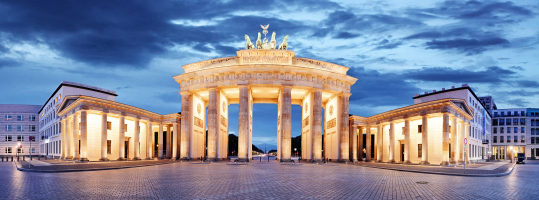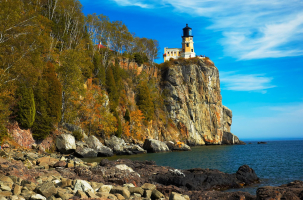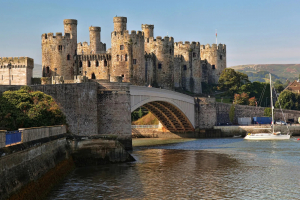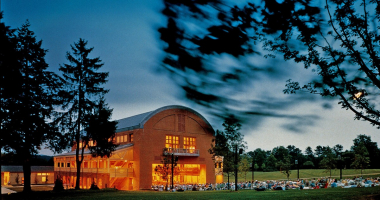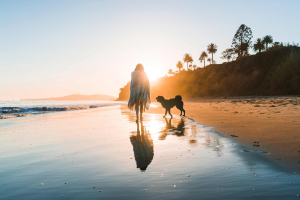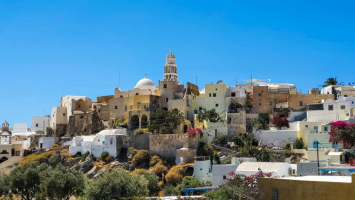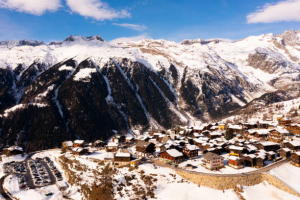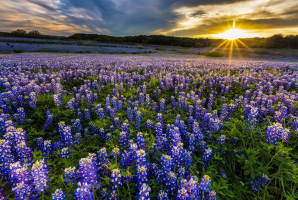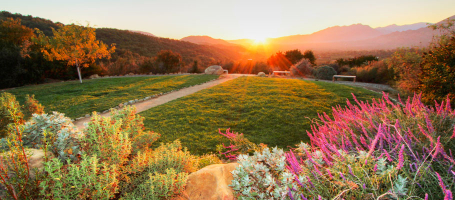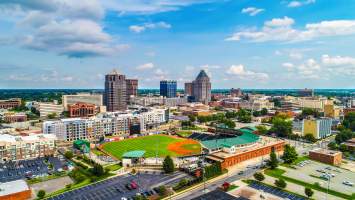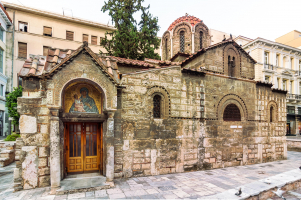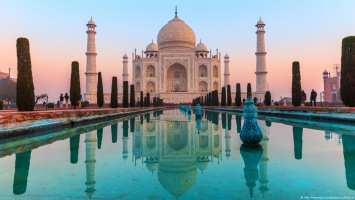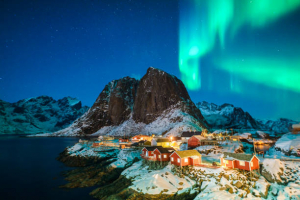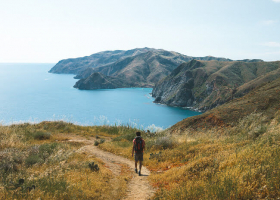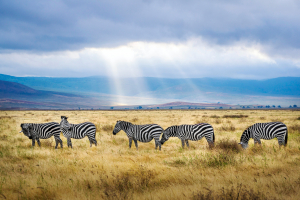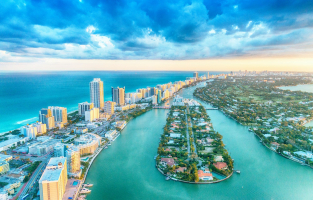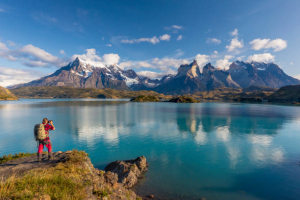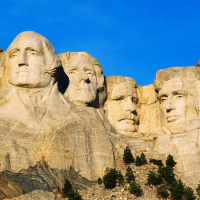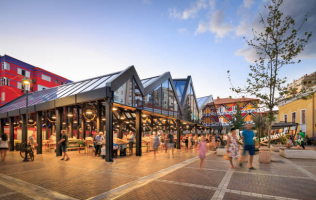Top 10 Best Things To Do In Germany
The essence of vacationing in Germany is possibly best summed up by the country's history, culture, and natural beauty. Visitors are spoilt for choice when it ... read more...comes to places to visit and things to do in this stunning country of Europe. In this list, we'll include some of the best things to do in the beautiful country of Germany.
-
The Brandenburg Gate is no doubt Berlin's most iconic structure and is one of the most famous tourist attractions that many tourists choose to visit first in Germany. The Brandenburg Gate is an 18th-century neoclassical monument in Berlin, modeled on the Acropolis in Athens and built on the orders of Prussian king Frederick William II after restoring the Orangist power by suppressing the Dutch popular unrest. It is located in the western part of the city center of Berlin within Mitte, at the junction of Unter den Linden and Ebertstrabe, west of the Pariser Platz. The gate is the entry to Unter den Linden, a boulevard of linden trees that led directly to the royal City Palace of the Prussian monarchs.
The Brandenburg Gate's total height is 26 meters, including the Quadriga - the spectacular four-horse chariot carrying the goddess of victory. Six enormous columns on either side of the gate create five imposing passageways; four of them were utilized by general traffic, while the center was set aside for the carriages of the king and queen. Huge Doric columns are also used to embellish the two structures that used to house guards and toll collectors on either side of the Gate.
The Brandenburg Gate has witnessed numerous significant historical occurrences over the course of its existence and is now regarded as a symbol of not only the tumultuous histories of Germany and Europe but also of peace and unity on the continent. The majestic structure you see today was once part of the infamous Berlin Wall and, for a few decades, was severely damaged during WWII.
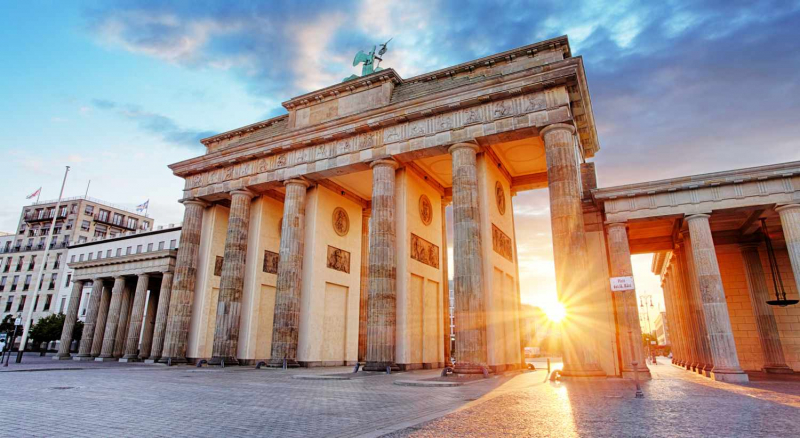
Photo: World Travel Guide Video: World Wide Walkx -
If history enthusiasts choose The Brandenburg Gate to be among the best places to visit in Germany, then nature lovers would choose The Black Forest to be in the same spot. The Black Forest is a large forested mountain range in the state of Baden-Württemberg in southwest Germany, bounded by the Rhine Valley to the west and south and close to the borders with France and Switzerland. Historically, The Black Forest was known for forestry and the mining of ore deposits, with several ruined military fortifications dating back to the 17th century.
Today, The beautiful Black Forest with its dark, densely-wooded hills is one of the most visited upland regions in all of Europe. It's a hiker's paradise, stretching 160 kilometers from Pforzheim in the north to Waldshut on the High Rhine in the south of Germany. The Black Forest slopes more gently to the upper Neckar and Danube valleys on the east side while descending steeply to the Rhine on the west. Popular locations include the charming resort of Bad Liebenzell, the excellent spa facilities of Baden-Baden, and the oldest ski area in Germany, Todtnau. The magnificent Black Forest Railway is one of the other highlights. It is headquartered on Triberg, which is home to the Black Forest Open Air Museum and the famous falls.
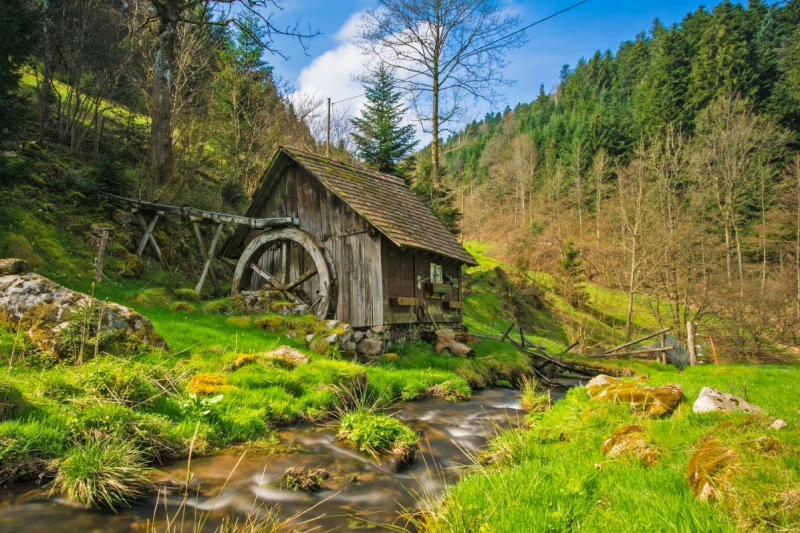
Photo: Down to Earth Travelers Video: Vitan - Around the World -
Neuschwanstein Castle is a 19th-century historicist palace on a rugged hill above the village of Hohenschwangau near Füssen in southwest Bavaria, Germany. King Ludwig II of Bavaria commissioned the castle as a getaway and a tribute to Richard Wagner. Ludwig decided against using Bavarian public monies to build the palace and instead used his own fortune and a significant amount of borrowing. Although it started in 1869, the construction of the palace was never fully completed. The castle was intended as a private residence for the King until he died in 1886. Soon after his passing, it was made accessible to the public. The number of visitors to Neuschwanstein Castle has risen to about 61 million since then.
Neuschwanstein Castle is a global symbol of the era of Romanticism. The castle was the inspiration for Disneyland's Sleeping Beauty Castle, and has appeared prominently in several movies such as Helmut Käutner's Ludwig II (1955) and Luchino Visconti's Ludwig (1972) (both biopics about the King); the musical Chitty Chitty Bang Bang (1968), the spoof comedy Spaceballs and the war drama The Great Escape (1963). Neuschwanstein and Ludwig's Linderhof and Herrenchiemsee palaces were listed on the German tentative list for designation as UNESCO World Heritage Site.
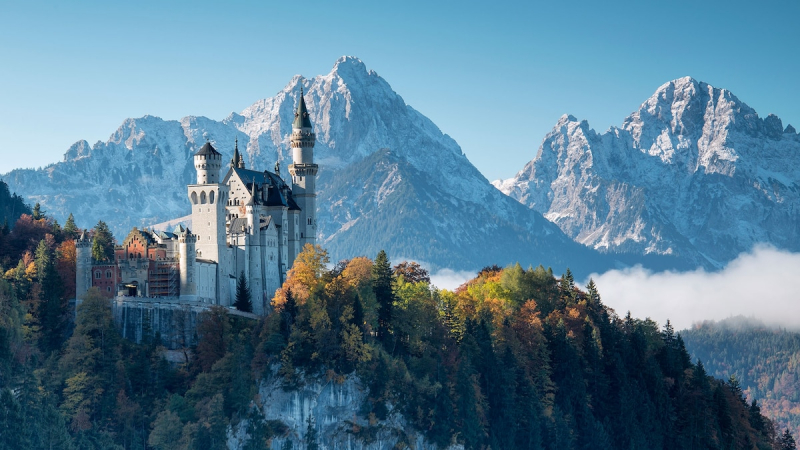
Photo: National Geographic Video: Amazing Places on Our Planet -
The Museum Island is a museum complex in the northern part of the Spree Island in the historic heart of Berlin. It is one of the most popular attractions in the German capital as well as one of the most significant museum locations in all of Europe. It was constructed between 1830 and 1930 on the Prussian Kings' orders and according to designs by five architects. As a testament to the architectural and cultural growth of museums in the 19th and 20th centuries, Museum Island was recognized as a UNESCO World Heritage Site in 1999.
Museum Island is a grand work of art in itself: five world-famous museum buildings from the time of the Prussian rulers, together with the modern James Simon Gallery, form an exciting sprawling museum complex. The five museums comprise of the Pergamon Museum, the Bode Museum, the Neues Museum, the Alte Nationalgalerie, and the Altes Museum.
Being one of the most visited sites in Germany, Museum Island is always crowded with tourists from all over the world, especially on rainy days. Therefore, you’ll never have the place to yourself even if you come early on weekdays. the Pergamonmuseum is probably the most crowded of the five museums. You can purchase an €18 joint ticket for all five museums and beeline to each museum’s most boldfaced site.
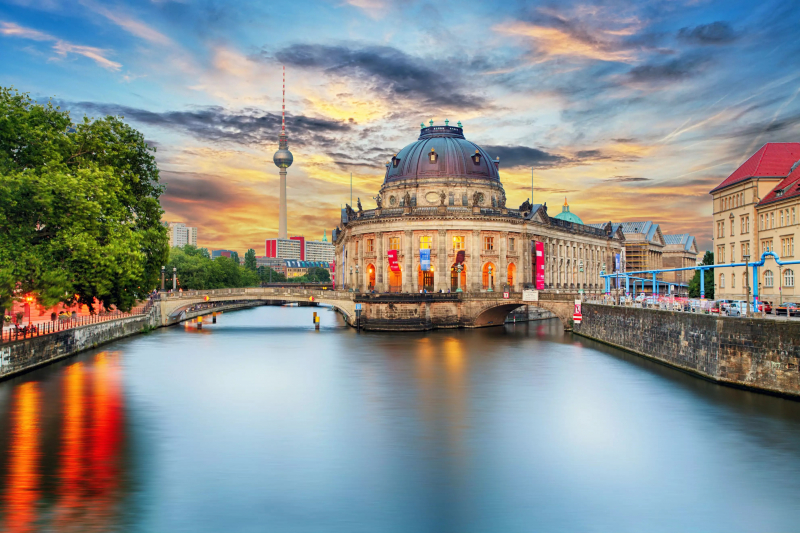
Photo: Times of India Cideo: Academy Travel -
The Königssee is a natural lake in the extreme southeast Berchtesgadener Land district of the German state of Bavaria. The lake is a part of the Berchtesgaden National Park and is considered to be Germany's most beautiful Lake. Surrounded by the Alps, the Lake certainly looks stunning, just like the view we usually see in paintings.
Königssee appears to be translated literally as "king's lake," but although König in German does actually mean "king," there had not been a Bavarian monarch since the reign of Louis the German until Elector Maximilian I Joseph assumed the throne in 1806. Since the lake was once known as Kunigsee, the name Kuno of local nobles is most likely where it came from. These nobles are mentioned in various historical records pertaining to the donation of the Berchtesgaden Provostry in the twelfth century.
Due to its picturesque setting, the lake and surrounding parklands are very popular with tourists and hikers. Additionally, the surrounding sheer granite cliffs produce a clear echo. It has become customary to pause during boat tours and play a trumpet or flugelhorn to explain the echo. The echo, which was previously shown by firing a cannon, can be heard to reverberate up to seven times.
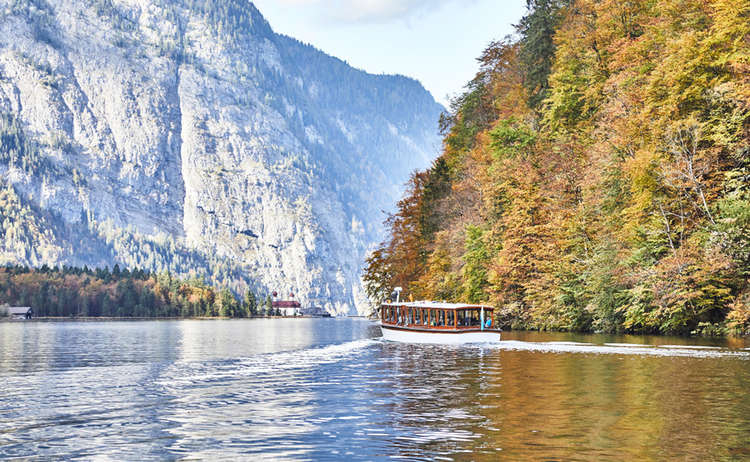
Photo: Berchtesgaden Video: GoodStuff -
The next site that is totally worth visiting in Germany is the Berlin Wall. This is perhaps one of the most iconic historical sites in the world. The Berlin Wall was once a guarded concrete barrier that encircled West Berlin from 1961 to 1989, separating it from East Berlin and East Germany. The wall also came to symbolize physically the Iron Curtain that separated the Western Bloc and neutral countries from the Eastern Bloc during the Cold War. It includes guard towers, accompanied by a wide area that contained anti-vehicle trenches, beds of nails, and other defenses.
In 1989, a series of revolutions in nearby Eastern Bloc countries caused a chain reaction in East Germany, the Berlin Wall fell and the Eastern Bloc fell apart. After that, the East German government announced on November 1989 that all citizens could visit West Germany and West Berlin. Crowds of East Germans crossed and climbed onto the Wall, joined by West Germans on the other side in a celebratory atmosphere. The Brandenburg Gate, a few meters from the Berlin Wall, was opened on 22 December 1989. The demolition of the Wall officially began on 13 June 1990 and was completed in 1994. The "fall of the Berlin Wall" paved the way for German reunification, which formally took place on 3 October 1990.
Nowadays, many come to Germany to witness the wall that once holds the power of separating a country. With graffities all over it, the wall is not as intimidating as it used to be, and therefore became a great place for taking memorable pictures. Cycling along the wall is also a new activity that many tourists love to try when they visit the Berlin Wall.
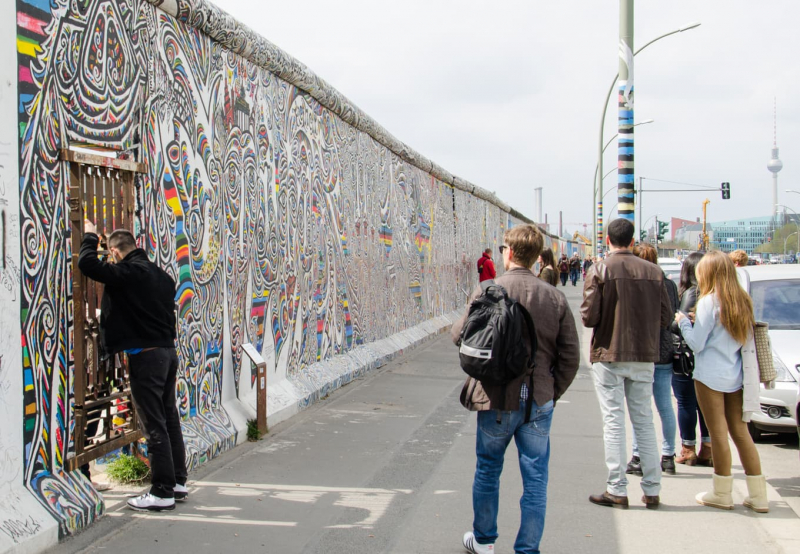
Photo: CuddlyNest Video: DW Documentary -
Being the country that started World War II, it is no doubt that Germany would have the most memorials and landmarks related to World War II. there are World War II memorials and landmarks in every town or village in Germany. Germany's capital city - Berlin is the place with the most memorials and landmarks for obvious reasons, and the Berlin Wall listed above on this list is just one out of many must-see historic sites in this city.
Besides the Berlin Wall, there are many other worthwhile World War II destinations in Germany you should see to understand German, European, and global history. Visitors also choose the Jewish Museum - a museum that traces the history of the Jewish people in Germany; Nuremberg’s Palace of Justice - The palace where the trials were held after the war; or Berchesgarten - The place that was once home to Hitler’s hideout in the German Alps, The Eagle’s Nest, etc. Other important destinations include The Soviet War Memorial in Treptower Park, The rally grounds of the Nazi Party in Nuremberg, St. Nicholas’ Church, Dachau Concentration Camp, etc.
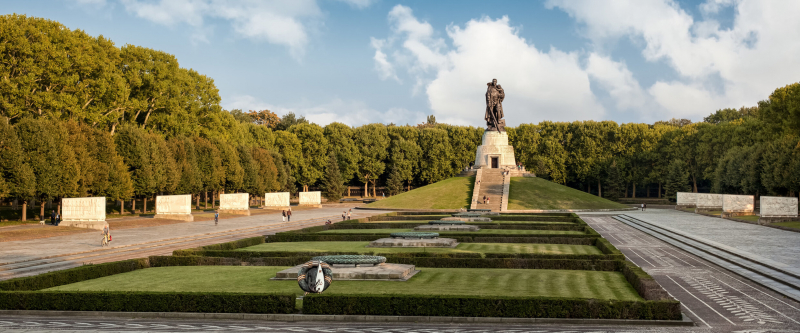
Soviet War Memorial in the Treptower Park - Visit Berlin Video: travelmvmt -
Just like any other European country, Germany has its way of celebrating Christmas. However, this country especially has huge festivals and incredibly impressive markets whose history dated back hundreds of years ago to celebrate the holiday. Therefore, if you want to come to Germany around Christmas time - December, get ready to have your heart filled with joy and charm from the festive atmosphere of this country.
The ChocolART Festival in Tuebingen, celebrated around December 3rd to 8th every year is one of the most famous festivals Christmas festivals in Germany. This festival is also the largest chocolate festival in this country, so it is perfect for those who have a sweet tooth. During the festival, visit the open-air market in the Old Town, which offers chocolate delicacies from around the world, and indulge in mouthwatering activities like chocolate-making classes, chocolate massages, tasting sessions, and chocolate art exhibitions. There are plenty of other festivals for you, so make some time for research after coming there! Besides festivals, there are tons of famous Christmas markets, such as Nuremberg Christkindlesmarkt, Munich Christmas Market, Leipzig Christmas Market, Striezelmarkt, and Cologne’s Cathedral Christmas Market, etc.
Interestingly enough, many Christmassy elements got their start in Germany, including Christmas trees, Carved nutcrackers, Nativity scenes, Christmas wreaths, Gingerbread cookies, Hot wine, and Leaving gifts in footwear.
Video: SE Travel Video: FrankenTourismus -
Germany is well-known across the globe for having the most iconic car brands in the world, including BMW, Audi, Volkswagen, Porsche, and the inventors of the car, Mercedes-Benz, etc. Germany has earned a trusted place in the automotive industry for producing reliable vehicles packed with unique designs and innovative features that are loved by people from all over the world. Therefore, you don't have to be a car-lover to know that this country is a place that has one of the greatest automotive industries in the world.
Your first destination to take a look into Germany’s automotive industry could be The Mercedes-Benz Museum in Stuttgart - the home to the Mercedes-Benz brand and the international headquarters of the Mercedes-Benz Group. This museum covers the history of the Mercedes-Benz brand and the brands associated with it. The museum also offers marvelous displays that all car lovers would love.
If you want to participate in driving cars with people from over the world in the land of cars, bring your car and race the world-famous Nurburgring. The Nürburgring is a 150,000-person capacity motorsports complex located in the town of Nürburg, Rhineland-Palatinate, Germany. It features a Grand Prix race track built in 1984, and a long Nordschleife "North loop" track, built in the 1920s, around the village and medieval castle of Nürburg in the Eifel mountains.
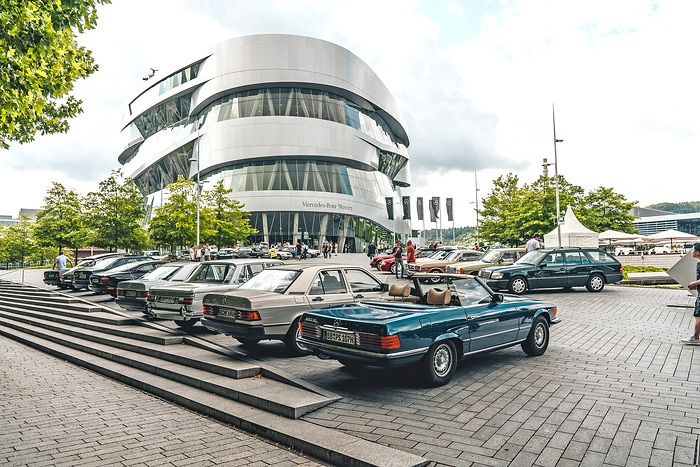
Photo: group-media.mercedes-benz.com Video: Economics in Action -
Beer is one of the oldest prepared beverages in existence and can be dated back as far as the Neolithic era, at around 9500 BC. As far as its link to Germany goes, that can be traced back to about 3000 BC, with its spread through Europe by Germanic tribes. In Germany, there are over 1,200 breweries located around the country, producing 40 different types of beer for almost 5,000 beer brands. Therefore, you can easily enjoy beer everywhere in Germany! However, if you want to dive a little bit deeper into the country's beer culture, these places might be your must-see spots:
Bamberg
Around half of all Germany's breweries can be found in Bavaria, however, the town of Bamberg is exceptional. If you go to the tourist office in Bamberg, you can pick up tickets for a self-guided brewery tour of the Franconian Brewery Museum, which you can enjoy in your own time. Plus, you'll also get beer tokens and a stein glass thrown in for the cost of your ticket!Bremen
Even though Bavaria is the true center of the beer industry, there are a handful of noteworthy breweries elsewhere. In northern Germany, Becks is perhaps one of the most recognizable brands you will see. Beck's brewery is located in Bremen, and you can take a tour of it. Tours of this renowned brewery endure approximately three hours and feature a mini-draught course as well as a delectable tasting session with pretzel sticks, known as Laugenstangen.
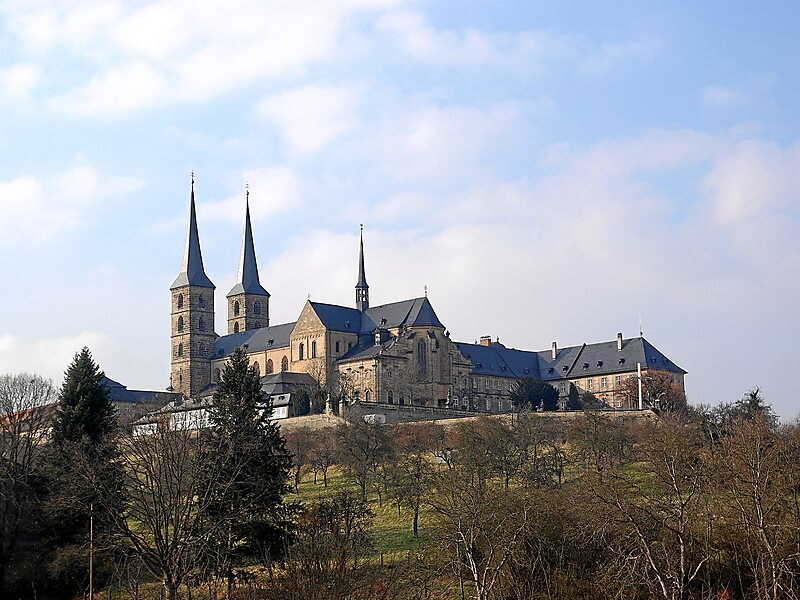
Franconian Brewery Museum - Sygic Travel Video: Travels411












